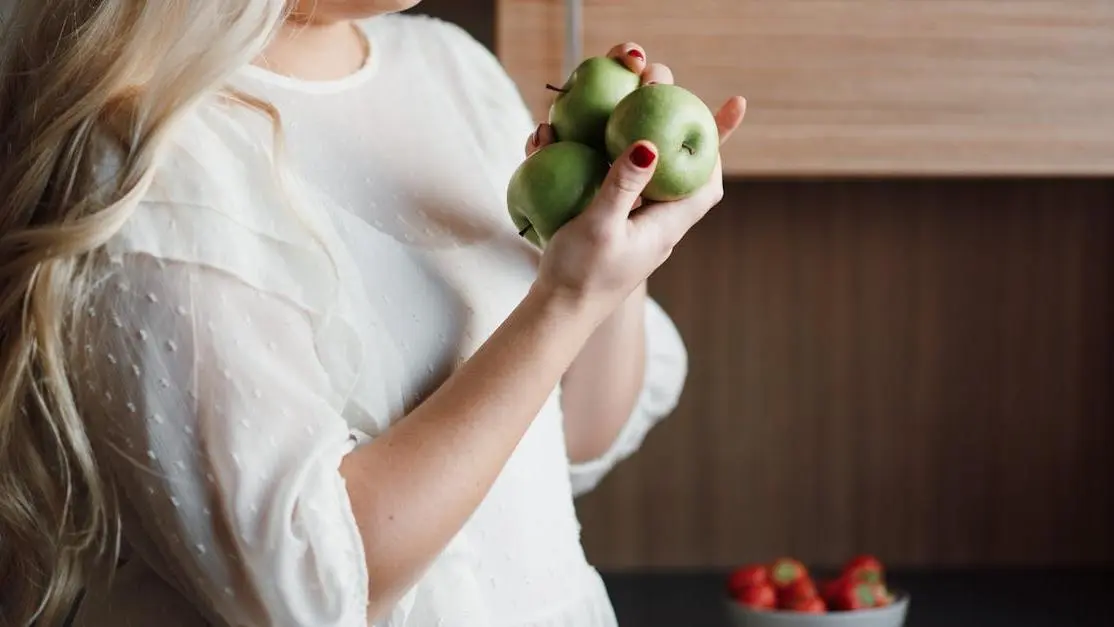Many families across Cookstown and nearby towns want a brighter smile but wonder if natural teeth bleaching is safe and truly effective.
We hear your concerns—choosing a gentle path to whiter teeth shouldn’t mean risking your comfort or health. That’s why we created this guide to shed light on:
- The science, safety, and results behind natural teeth bleaching
- What truly works (and what should be avoided) for your family’s unique needs
- How to protect and maintain your natural smile at home and with professional support
Interested in teeth whitening? Learn more about our professional teeth whitening for a brighter smile.
Begin With a Smile: Why a Brighter Smile Matters for Families in Cookstown
A brighter smile does more than look good. It powers confidence, makes great first impressions, and creates positive family moments. Here’s why it matters for our local families:
Key Benefits of a Whiter Smile:
- Social confidence: Strong, healthy smiles encourage more interaction, boosting self-esteem and approachability for both children and adults.
- Better family photos: Big milestones, birthdays, and school events look even better when everyone feels comfortable showing teeth.
- Motivation for healthy habits: Kids and parents are more likely to keep up with brushing and dental visits when they’re proud of their teeth—this builds lifelong routines.
- Community pride: In Cookstown and across our region, a healthy smile makes you appear trustworthy and reliable. That’s a real advantage at work, school, and in social groups.
- Quick mood boost: When you look in the mirror and see a whiter smile, you feel more energized—and research confirms those results aren’t just cosmetic.
Here at Cookstown Dental Centre, families are always asking about ways to get a brighter, safer result at home. It’s smart to seek an option that fits your schedule, budget, and comfort level. We’re here to help you explore every option—natural and professional—so you can choose with total confidence.
What Is Natural Teeth Bleaching?
Natural teeth bleaching means using at-home methods or ingredients, with minimal chemicals, to lighten tooth color. Not every “whitening” method fits this definition. Natural bleaching targets stains from food, drinks, or habits—without harsh chemicals.
Let’s break down what counts as “natural” and what to skip:
- Baking soda: A gentle abrasive that can scrub surface stains without damaging enamel when used moderately.
- Low-concentration hydrogen peroxide: Can chemically lighten teeth if carefully diluted. Moderate use is key.
- Oil pulling with coconut oil: Removes plaque-causing bacteria and slightly reduces yellowing for some people.
- Fruit enzymes (papaya, pineapple): Gentle, natural protein breakdown can reduce some surface stains.
- Dietary change: Cutting back on dark drinks and switching to crisp fruits and veggies prevents future stains.
Not all online “hacks” are safe. For example, lemon juice and undiluted peroxide erode enamel. Charcoal pastes are too abrasive. While baking soda and coconut oil are generally safe, even strawberries offer only mild results and can cause problems if overused.
Always check with your dentist before starting any home remedy, even natural ones. Some ideas online do more harm than good.
Why Do Teeth Become Discolored?
You want the best results from any whitening routine. That starts with understanding why stains form and what you can realistically change.
Teeth can look darker for lots of reasons:
- Daily diet: Coffee, tea, cola, wine, and colorful foods like berries or soy sauce leave visible tints.
- Aging and enamel thinning: As enamel thins naturally, the yellow dentin underneath shows through.
- Smoking and tobacco: Nicotine and tar soak into enamel, causing stubborn brown or yellow stains.
- Medications: Some antibiotics (like tetracycline) and trauma create stains inside the tooth that don’t fade easily.
- Poor oral hygiene: Plaque and tartar hold onto color from what you eat and drink, amplifying stains.
Surface stains (extrinsic) often respond well to natural bleaching. Deeper stains (intrinsic) usually need help from a dental professional.
How Do Natural Teeth Bleaching Methods Work?
Each natural method works differently. Some physically scrub stains. Others break them down chemically. Here’s the science behind the most popular options:
Baking Soda
Baking soda acts as a mild abrasive and neutralizes acids. This lifts off recent stains and even helps protect against new decay. It also works slowly, so it’s less likely to cause sensitivity when used right.
Hydrogen Peroxide
Diluted hydrogen peroxide breaks down chromogens, the pigmented molecules that stick to enamel. Keep it at or below 3 percent, and never use too much. Overdoing it risks gum burns or enamel loss.
Oil Pulling
Swishing coconut oil draws away bacteria and reduces plaque, removing some yellowing. Evidence shows results are moderate, best for those with mild, new stains.
Fruit Enzymes and Acids
Enzymes from papaya (papain) and pineapple (bromelain) mildly dissolve protein buildup. Malic acid in strawberries dissolves some stains but can erode enamel. Never use strong acids like lemon juice.
Activated Charcoal
Charcoal is trendy but risky. It’s very abrasive. Regular use can scratch away enamel, causing lasting sensitivity and more staining over time.
Are Natural Teeth Bleaching Methods Safe?
Safety depends on your technique and which ingredients you use. The badge “natural” doesn’t guarantee something is safe for teeth.
Top Natural Whitening Safety Tips:
- Always mix baking soda with water and limit use to a few times per week.
- Only use hydrogen peroxide that is labeled safe for oral care; always dilute and don’t use daily.
- Avoid strong acids (lemon juice, vinegar) and skip abrasives like charcoal pastes.
- Oil pulling is low risk but won’t deliver dramatic whitening.
- Use a soft-bristled toothbrush to prevent enamel wear.
- Watch for pain or gum irritation and stop any method if symptoms appear.
Frequent or aggressive use of any whitening method—even natural—can thin enamel and increase sensitivity. Enamel won’t grow back once it’s gone. Always ask your dentist before starting new routines.
Comparing Natural Teeth Bleaching and Professional Whitening Treatments
Deciding between DIY and dental-office whitening? Each has clear strengths, and each comes with trade-offs.
Professional whitening gives the fastest, most noticeable results. You see several shades’ improvement in a single visit due to stronger whitening agents and custom-fit trays. At Cookstown Dental Centre, we tailor our approach to your sensitivity, goals, and timeline—always with a pain-free, stress-free promise.
Natural whitening: best for mild, recent stains and patients with healthy teeth and gums. Slower improvements. Results can take weeks, sometimes uneven or limited. Professional whitening: best for deep stains, events just around the corner, or anyone who needs rapid, even results. Done under expert supervision for safety—and the boost is dramatic, with lower risk when personalized. Restorations like crowns or veneers don’t change color with any bleach. Only a dental pro can match these for a consistent look. If you have persistent discoloration, sensitive teeth, or past troubles with DIY whitening, a professional evaluation is your safest first step. Our expertise ensures you get guidance, comfort, and a smile you’re proud to show.
Who Should Try Natural Teeth Bleaching (and Who Should Not)?
Not everyone gets the same results, or the same safety, from natural whitening techniques. Knowing your risks is key. Let’s clarify who can benefit—and who should steer clear.
Natural Teeth Bleaching: Best-Fit Candidates
- Mild surface stains: Recently darkened teeth from coffee, tea, or food?
- Healthy enamel: No ongoing sensitivity, decay, or visible wear.
- Consistent oral care routines: Brush, floss, and see a dentist regularly.
- No major dental work: If you have only natural teeth, not crowns or veneers.
Who Should Avoid or Pause At-Home Bleaching
- Sensitive teeth or thin enamel: Even gentle abrasives can worsen aches and wear.
- Children and teens: Young enamel is softer. Wait until after full tooth development.
- Dental restorations: Fillings, crowns, and braces don’t bleach evenly—results get blotchy.
- Pain or persistent discoloration: These are signs you need a dentist’s help, not a new DIY hack.
When you see persistent dark spots or feel pain, that's the sign to stop and get a professional assessment before trying more.
Best Practices for Effective and Safe Natural Teeth Bleaching at Home
Step into action with a plan that works—and keeps your teeth safe. The key? Use the right techniques, avoid risky “tricks,” and always pay attention to your body’s feedback.
Action Steps for Natural Whitening at Home
- Mix one teaspoon baking soda with two teaspoons water; use as a gentle paste up to three times per week. Never scrub hard.
- Oil pulling: Swish a full tablespoon of coconut oil for 15–20 minutes, then spit. Use daily only if you see no irritation.
- For hydrogen peroxide, never exceed 3%. Dilute down to 1.5% and use as a short rinse no more than a couple times per week.
- Skip lemon juice, vinegar, and charcoal powders—these damage, not whiten.
- Brush twice a day with fluoride toothpaste. Floss daily to reduce stain buildup.
- Track how your mouth feels. If you spot sensitivity or your gums sting, stop and call us.
Building a simple whitening diary keeps you accountable—and lets you spot problems before they escalate.
How to Maintain a Naturally White Smile Long-Term
A whiter smile isn’t just about what you do once. It’s about what you do every day. A few small changes lock in results and keep stains from returning.
Habits That Keep Teeth Bright
- Rinse after dark drinks: Water cuts coffee, tea, or wine stains if you can’t brush.
- Crunchy fruits and veggies—like apples and celery—brush away debris while you chew.
- Choose calcium-rich snacks. Cheese, milk, and broccoli strengthen enamel.
- Quit smoking and skip tobacco. If you drink soda or juice, use a straw.
- Don’t skip dental cleanings. Regular checkups keep plaque and tartar away and let us tackle tough stains early.
A strong routine at home plus professional cleanings keeps your investment—and confidence—strong.
Debunking Common Myths and Misconceptions About Natural Teeth Bleaching
Let’s clear up the confusion. Not everything labeled “natural” is gentle, and not every trend on social media delivers safe results for families.
The Top Myths, Busted
- Baking soda is safe as a supplement, not as a total toothpaste replacement. You still need fluoride for cavity defense.
- Charcoal toothpastes are not gentle. Studies show they erode enamel quickly, even if the “before and afters” online look great.
- Lemon and vinegar DIYs cause rapid enamel loss, not just whitening. Acid eats teeth faster than stains!
- Brushing harder or more often won’t get better results—it just leads to gum pain and sensitivity.
Trust science—not social posts. When in doubt, check with your dentist before you try a new whitening method.
When to Seek a Dentist’s Help for Whitening and Stain Removal
If your teeth aren’t responding or you’re not sure what’s safe, you need expert support. Our Cookstown Dental team is here for you.
When should you schedule a visit?
- Stains don’t fade with regular brushing or at-home options.
- You notice pain, throbbing, or sudden color changes.
- You wear crowns, veneers, or orthodontic appliances.
- You want a fast, even result for an upcoming big event.
We deliver expert, pain-free whitening. Our consultations pinpoint your stain type, spot risks, and design custom, comfortable plans—so you never have to second-guess results.
Conclusion: Smile Confidently With Clarity on Natural Teeth Bleaching
You deserve clarity and confidence. With the right science-backed steps, your family can safely boost your smile, avoid painful mistakes, and protect your results for years to come.
Want safe, powerful whitening or have questions? Contact us at Cookstown Dental Centre. We’re ready to make your bright smile a reality—without pain, without guesswork, and always with care tailored just for you.
Interested in teeth whitening? Learn more about our professional teeth whitening for a brighter smile.

